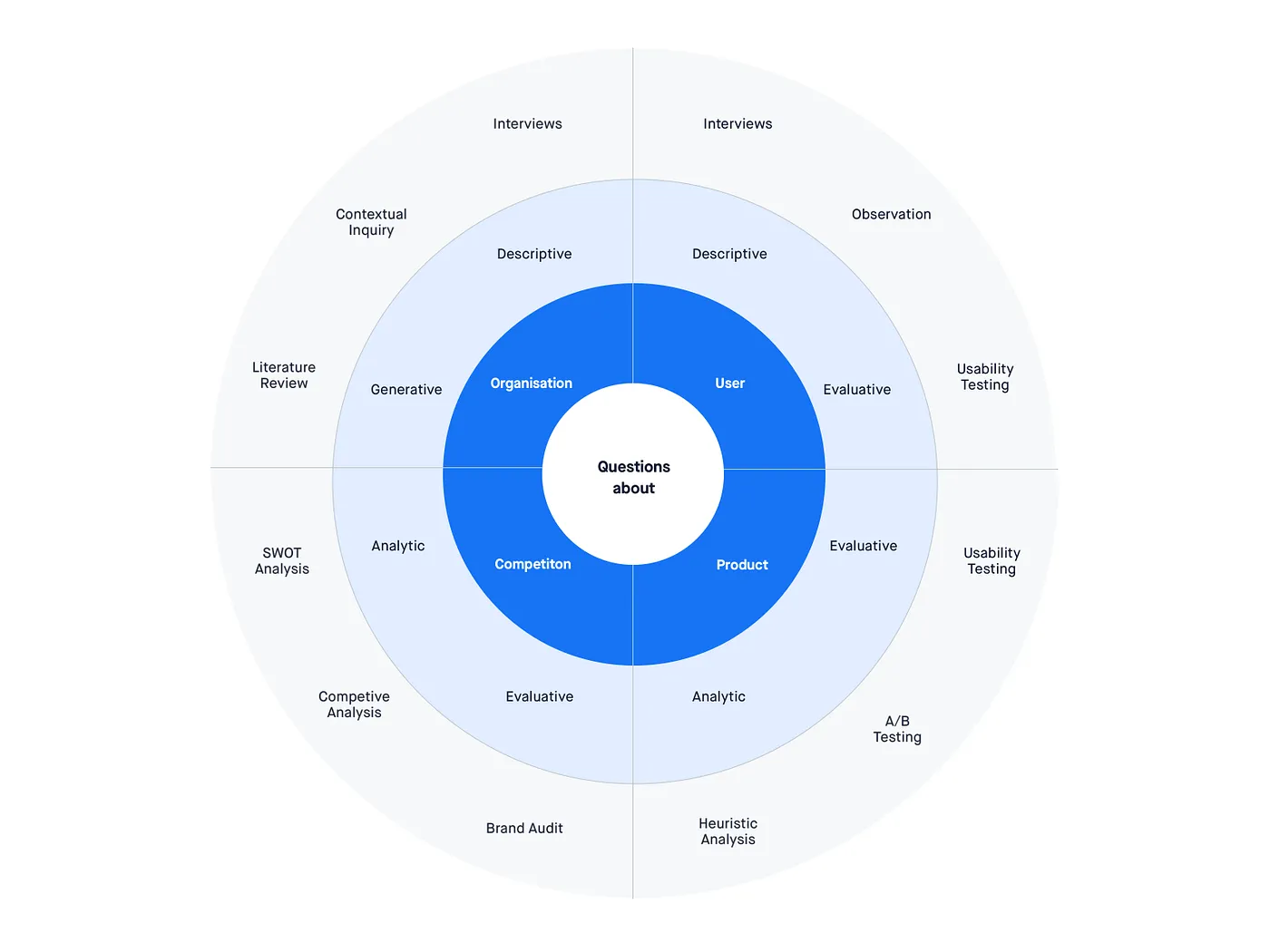Business
How to plan and sell design research

Noortje Geluk
Mar 13, 2019
In a perfect world there is enough time and budget to conduct design research properly. In that same world, clients spread their arms and try to hug you when you only bring up the idea of doing design research. Since I work at Strakzat, we have experienced that’s often not the world we design in. Clients may have a faint idea that research is a good thing, but the benefits and results are fuzzy — while the costs are clear. So when budgets are constrained or time is limited, research takes the hit and gets cut out.
Taking on the project while skipping research puts us in an awkward position with a lot of bumps on the road. Sure, it’s possible to work with assumptions. As long as you validate those with user testing. Again, we’ll need time, budget and access to a suitable test group. Often resources clients don’t possess.
We can do better. From now on we decided design research should always be at least some part of our process. This is how we make our case for selling UX research.

The value of UX research
UX research helps us to discover why people act in certain ways and how this translates into opportunities for your business. It will lead to more innovative and effective solutions for your target end users.
Why we shouldn’t be skipping research
Conducting UX research activities helps us:
Reducing risk — the risk designers bring up the product, the client and oneself by relying on assumptions that turn out to be wrong or failing on focussing on what’s most important to the users and the business.
Aligning business goals and product strategy with user needs and goals.
Saving time and money. It’s easy to waste a lot of time and money on building and designing products users simply don’t want or need.
Identifying and addressing our biases, misconceptions and blind spots, which otherwise could be unfavorable to the success of the product.
Shortening (sometimes unnecessary) internal discussions, because of better substantiated design-decisions.
Types of research
Before we jump to the solution, let’s take a look at the types of research first. UX research can serve different purposes throughout the design process. It’s important to know when to use which kind of research and in what way it adds value to the process.
A more extensive article on when to use which UX research and method (and we really suggest you take a look at) is provided by Christian Rohrer. We also suggest reading “Just Enough Research” by Erika Hall.
Research for all kinds of situations
Hall (2013) divides research into these four pillars which give us an idea of when we’re researching:
Generative or exploratory research: “What’s up with..?”
This is the research you do before you even know what you’re doing. It’s the first step that leads to defining the problem.Descriptive and explanatory research: “What and how?”
This is what you do when you already have a design problem and you need to do your homework to fully understand the context to ensure that you design for the audience instead of yourself.Evaluative research: “Are we getting close?”
Once you have ideas for potential solutions, you can test them to make sure they work and meet the requirements you’ve identified.Causal research: “Why is this happening?”
This is the research you do once you have implemented the solutions you proposed and have a product that’s up and running. You can begin analysing and test how people are using your design.
Fields of research
Under the pillars lay four topics that give us an idea of what we’re researching:
Product research:
Questions about the product you’re designing and building.User research:
Questions about the users you’re designing for.Organisational research:
Questions about the organisation or business you’re designing for.Competitive research:
Questions about the competition on the market.

For every kind of research there are several suggested research methods (Hall, 2013)
How to engage clients with research
The challenge we face is to show the value of research to our clients. They need vivid and specific reasons to invest. We have been experimenting with a process that can support us in convincing the client. It consists of three steps that help us to communicate the value of research.
1. Get to know the situation
First, we want to know more about the project we’re going to work on. Especially about the current state of knowledge. So, we always have a first meeting where we get to know the client and the project. Based on the four types of research, we created a checklist with types of questions (about the problem, the user, the business and the competition)we want to ask. What do we need to know to design properly?We often know we won’t be able to conduct all four kinds of research excessively. That’s why it’s important that we get enough insights about the knowledge and possible risks within the organisation. Actually, it’s about detecting the risks that have the highest impact.
2. Analyse the risks
Once we have gathered input from the client, it’s time to analyse it: taking a second look at the insights that are provided. What do we know for certain? What are assumptions? Are there any assumptions that are safe to treat as facts for the time being?Taking the limited time provided in account; we can’t fill in all the gaps. It’s important we use our time efficiently and avoid unnecessary research. First, we investigate our knowledge gaps and identify the ones that carry the biggest risks. Next, we can link research methods to these high-priority items.We do that by setting up a research plan. This plan makes it clear what we’re exactly going to sell to the client. Combined with the risks we state in this document, it also offers insight in why we should be doing this research. And that’s exactly what the clients need to see and understand.
3. Discuss the risks and solutions
Once we’ve come up with a clear plan, it’s time to present it to the client. We emphasize on the risks and our solutions (research methods) to reduce it. For all risks we use a simple format: tell why we think it’s a risk for their situation, show them what could happen if we don’t reduce the risk and provide one or multiple solutions.
So, this is how a conversation with the client might go:
“In our first meeting you told us you never spoke to your audience and never gathered feedback from them. As we see it, you know a lot about the business side and know what problems you’d like to solve, but we feel like you’re assuming your users do have the same problems, but we think it might be worthwhile to invite some of your users over to talk about the product, how they use it and find out where their problems lie. Otherwise, we’re afraid that we will be solving problems that aren’t of high priority to your users, which might be a waste of resources. That’s why we want to talk to five of your users and ask them a few questions, while letting them interact with the product. As you can see it will take only half a day and it could save us many.”
Our approach is all about confronting our clients in a subtle and friendly way. We have their best interest at heart, so we definitely don’t want to scare them away or make them angry. But they do need to realise that poor UX and inconsiderate choices are expensive. Even more expensive than spending some time doing the essential research.
We advise our clients to reduce risks and help them prioritizing the risks we deem most impactful, but they remain in control. We give them the opportunity to choose what risks they want to tackle and what risks they want to ignore (for now).
Going for the long run
Showing the approach and impact of skipping essential research, let clients realise what the consequences are. It’s easier for them to empathise with our proposed research approach if they know why we’re doing it and when they realize it’s a possibility to reduce the risk of the overall business. We make them face the facts: doing research takes a few bucks now, but will save many in the end.
Selling research is still hard, but we feel like we’re making progress. We’re always looking for more ways to improve our ways of working and always try new things to involve clients in our process.